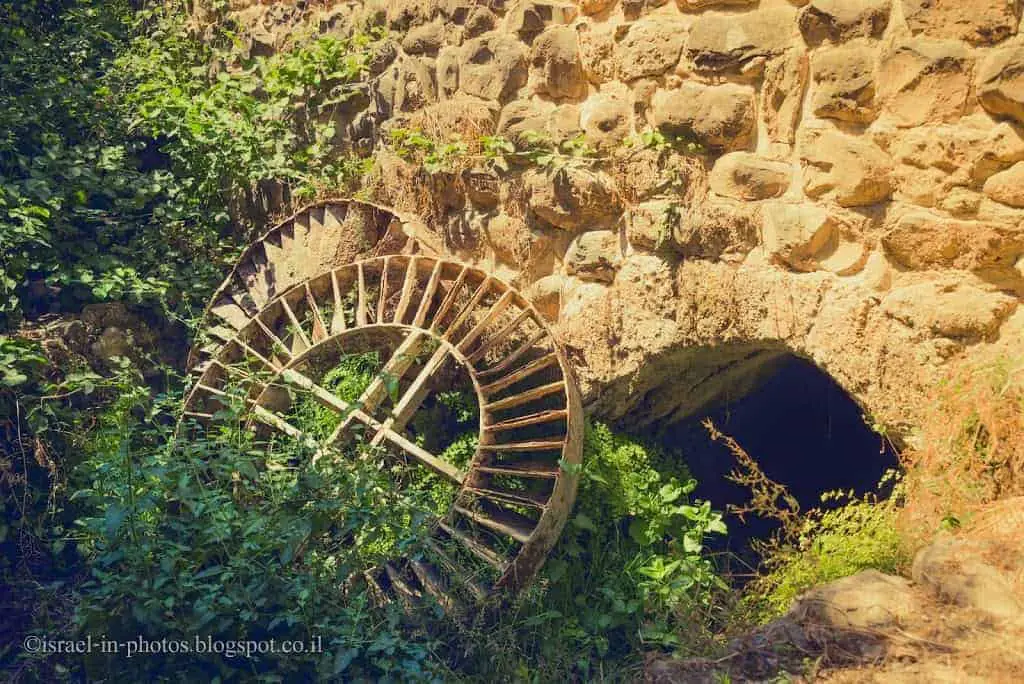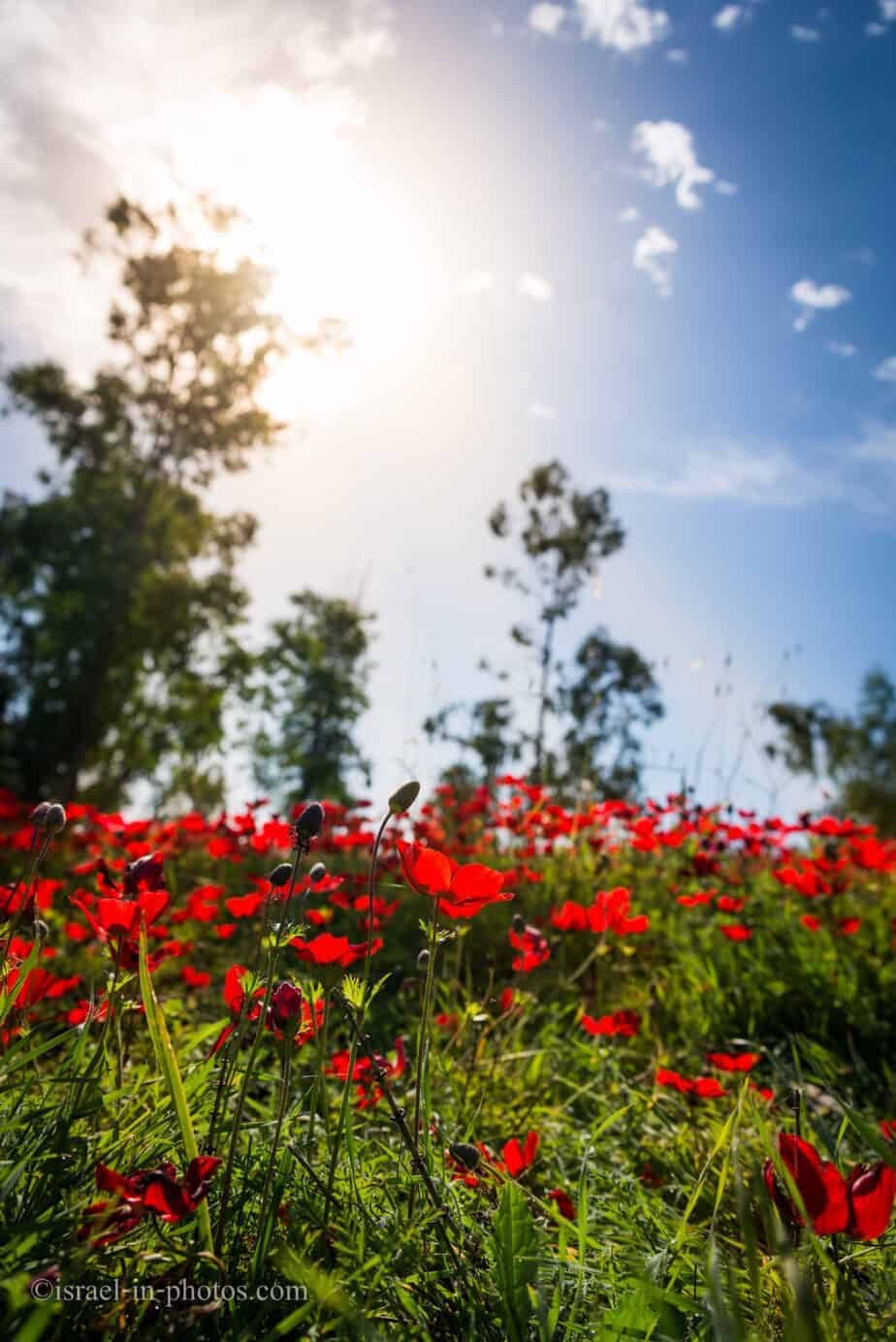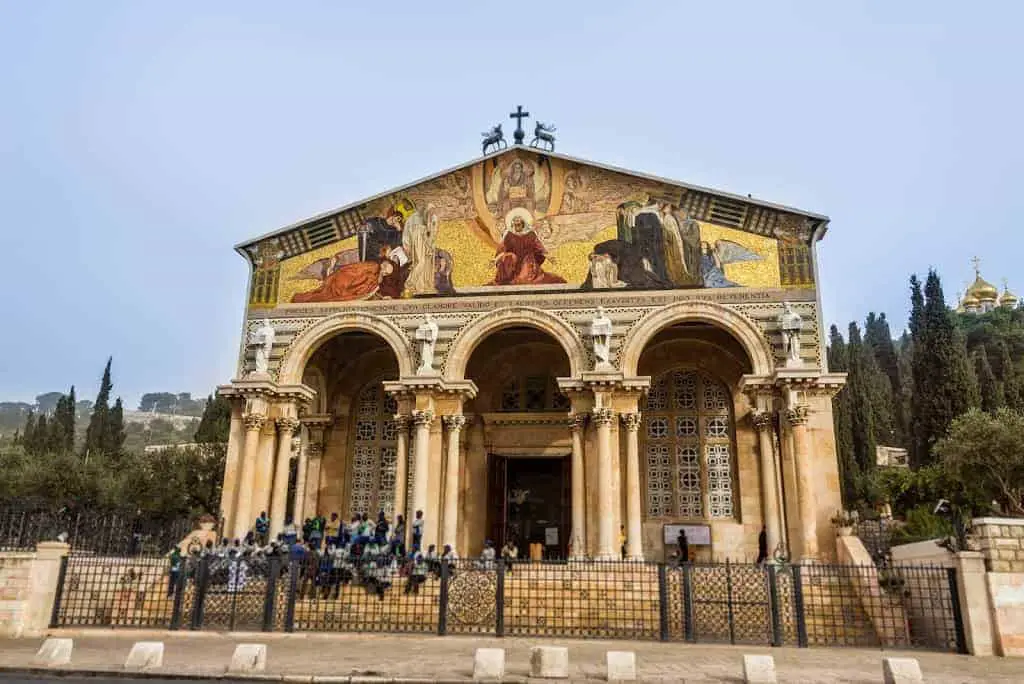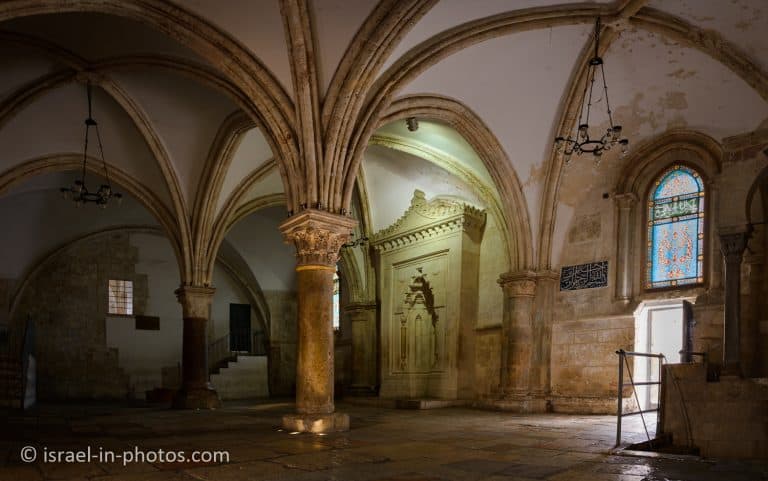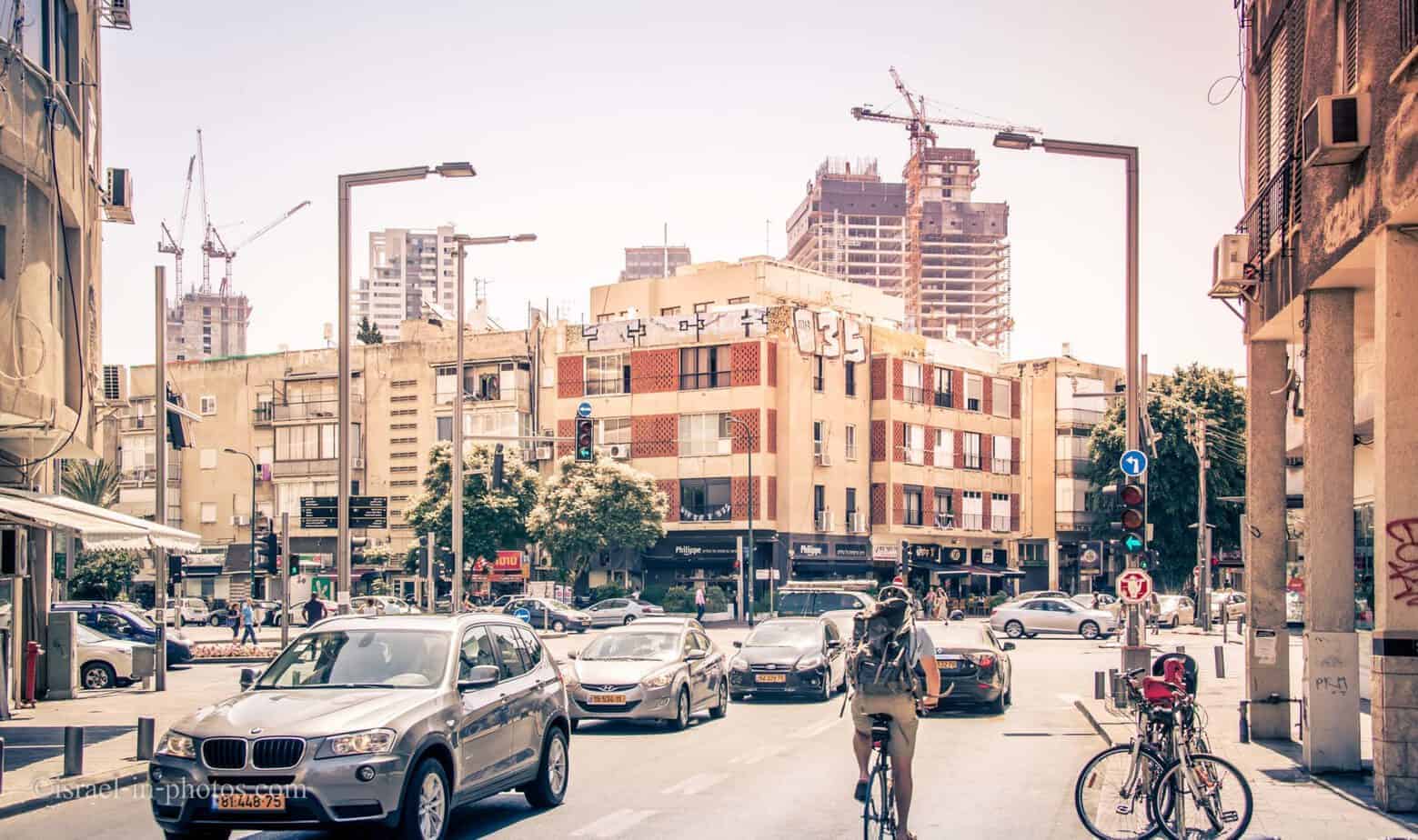Korazim (Chorazin) National Park – Visitors Guide
Korazim National Park presents an ancient town with a beautiful synagogue several kilometers north of the Sea of Galilee.
Table of Contents
Map
Chorazin was an ancient town in Galilee, four kilometers from Capernaum, on a hillside about 300 meters above the water level of the Sea of Galilee. Here you can see it at the top of the map:
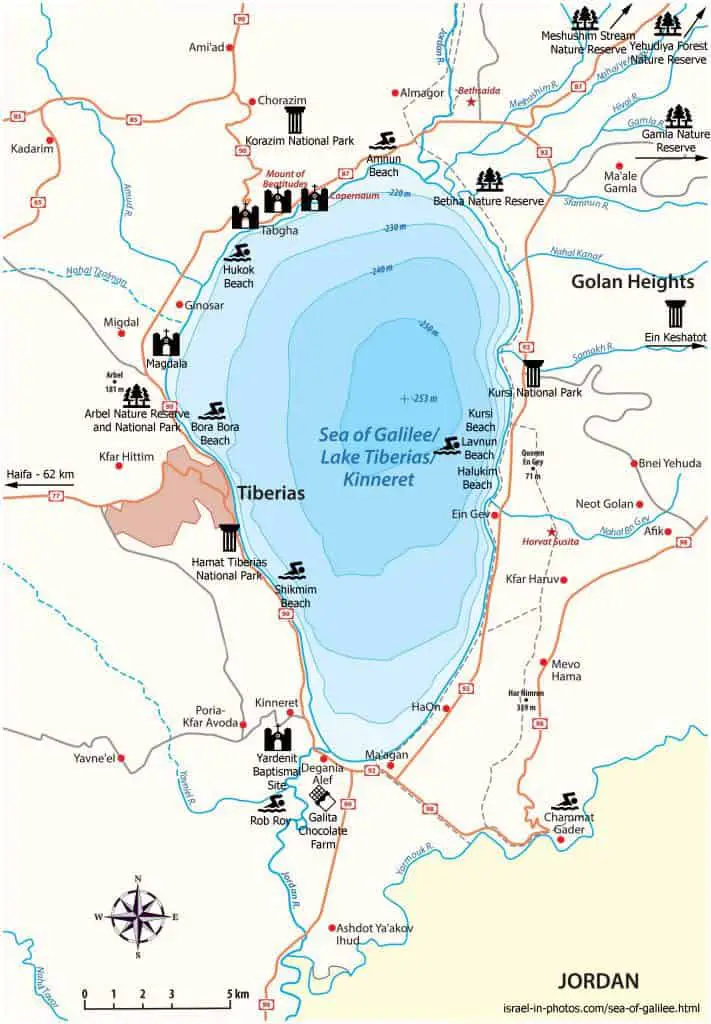
Directions for drivers: Link to Waze and Link to Google Maps
Directions for public transport: Link to Moovit
Interactive map of the area:
Directions
Enter “Korazim National Park” into Waze or Google Maps if you drive there. And next to the park’s entrance, you will find free parking.
Getting to Chorazin National Park by bus is inconvenient. You can take a bus to the nearby city of Chorazin and then walk for around half an hour. But this will be a hike at the shoulders of the intercity highway. Or you can reach one of the nearby cities like Rosh Pina, and take a taxi from there. Check out this preset Moovit for additional information.
Opening Hours
Sunday – Thursday and Saturday: 8:00 – 17:00 (16:00 in winter).
Friday: 8:00 – 16:00 (15:00 in winter).
On holiday eves, usually 8:00 – 13:00.
Note: Since the pandemic, the Israel Nature and Parks Authority has started limiting the number of people in each park. Thus, reservations are recommended through the official site (you can find the link below).
Entrance Fee
Adult 24 NIS, child 10 NIS, and student 20 NIS. Free for National Parks annual subscribers.
If you visit multiple National Parks, consider purchasing a combo ticket. Additional information is available at National Parks and Nature Reserves.
Note: opening hours and ticket prices were updated in May 2022. In any case, recheck the official site before visiting.
Korazim Plateau
The Korazim Plateau (Ramat Korazim, also spelled Corazim), is a volcanic plateau, located in northern Israel. The plateau is bordered by the Hula Valley in the north, by the Sea of Galilee in the south, by Mount Canaan to the west and by the Jordan River to the east. It is named after an ancient Jewish settlement also called Korazim, or “Chorazin.” Its peak is at Filon Hill, which is 409 meters above sea level. According to different ways to draw its borders, it spans an area of between 80 km2 to 135 km2.
The plateau is home to a few Israeli communities, including Rosh Pinna, Hatzor HaGlilit and the Bedouin town of Tuba-Zangariyye. The plateau’s rural settlements make part of the regional councils of Upper Galilee Regional, Mevo’ot HaHermon, and Emek HaYarden. Several important archeological and historical sites are located on the plateau, including Tel Hazor, Daughters of Jacob Bridge, Mount of Beatitudes and Jubb Yussef.
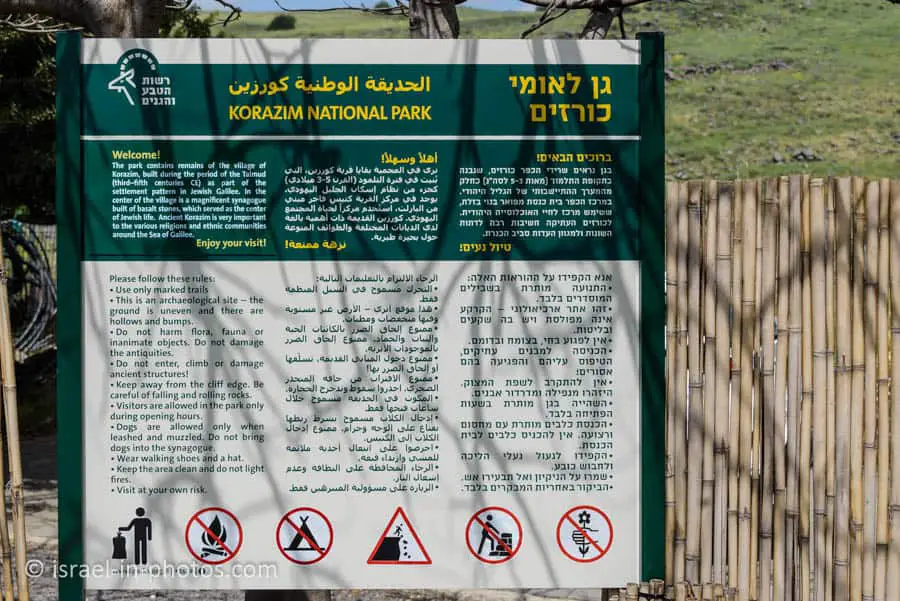
Geology
Geologically, the plateau is divided into two main sections. The southern two-thirds are covered in layers of basalt. The basalt area falls from a height of 409 meters above sea level to 210 meters below sea level at the coast of the Sea of Galilee. The basalt is aged between 1.6 and 2.9 million years in the upper part as measured near Kfar HaNassi, and 3.5 to 5 million years in the lower part as measured near the village of Korazim.
Some volcanic cones were found near Tel Ruman, Filon Hill and probably also in Tel Nes and Tel Ya’af. The origin of the young basalt is perhaps from these volcanic cones, but the older part of the basalt is part of a significant layer of basalt which also covers the Golan Heights and southern Syria. The basalt part of the plateau is very similar to the nearby Golan with its rocky landscape, the characters of the ancient settlements found there, as well as the abundance of dolmens found here.
The northern third of the plateau is characterized by lower hills of limestone, conglomerate and some young basalt near Yarda. The height of this part ranges from 100 to 250 meters above sea level. On this area, the city of Hazor was established, which was an important city in ancient and biblical times. Some limestone layers can also be found in around the banks of the Jordan River (such as the area of the Daughters of Jacob Bridge). The plateau is bounded by faults to the east (the Jordan River Valley) and the west (on the slopes of Mount Canaan). Other signs of fracture in the basalt indicate recent tectonic activity in the region (which may be the cause of the Galilee earthquake of 1837.
Source both quotes: Wikipedia
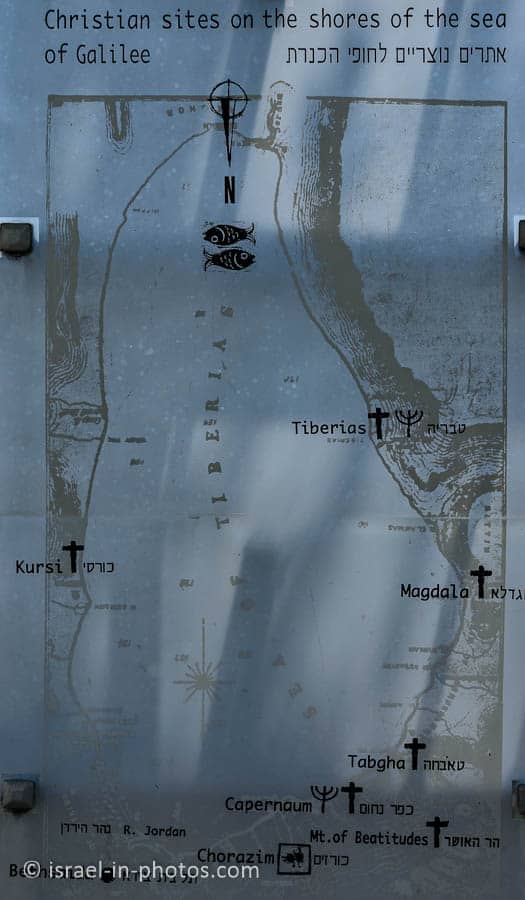
Chorazim in The Bible – “Woe to you, Chorazin!”
Chorazin, along with Bethsaida and Capernaum, was named in the gospels of Matthew and Luke as “cities” (more likely just villages) in which Jesus performed “mighty works.” However, because these towns rejected his work (“they had not changed their ways”), they were subsequently cursed (Matthew 11:20-24; Luke 10:13-15). The gospels make no other mention of Chorazin or what works had occurred there. According to the two-source hypothesis, this story originally came from the Q document. Despite this textual evidence, archaeologists have not yet been successful in finding a settlement dating to the first century. Due to the condemnation of Jesus, some early Medieval writers believed that the Antichrist would be born in Chorazin.
The Babylonian Talmud (Menahot, 85a) mentions that Chorazin was a town known for its grain.
Two settlement phases have been proposed based on coin and pottery findings.
Source: Wikipedia

Digging Through Time
If you want to experience Korazim uniquely and become an archaeologist for a day, check out the “Digging Through Time” activity that the Israeli Nature And Parks Authority offers. The activity, led by an expert archaeologist, lasts 2–3 hours, suitable for families and groups. There are groups both for English and Hebrew speakers. Moreover, you can include a tour and an ancient crafts workshop (at an additional fee). For further information and the registration form, check out the official site.
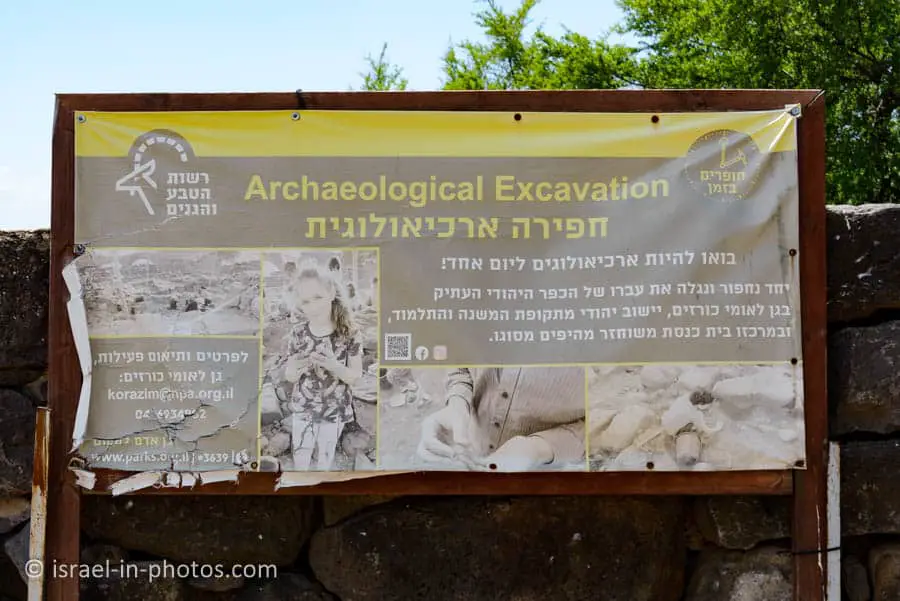
Also, they offer this activity on holidays. And during Passover 2022, we participated in digging activities for families.

Trail to Capernaum
Before entering this national park, I wanted to mention there is a trail to Capernaum. The path begins near the parking, and it is four km long.
It is a one-way downhill path, and you should leave the second car by the Greek Orthodox Church in Capernaum.
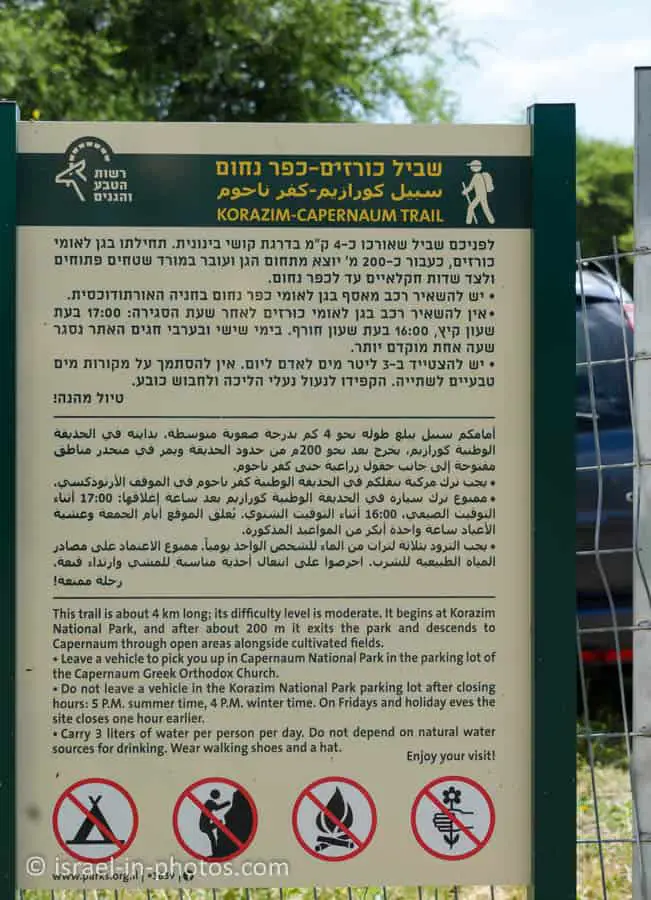
At Korazim National Park
Here is a view from Korazim National Park toward the Sea of Galilee:

As you enter the park, you can see many remains. Many of the remains are made of black basalt, the region’s most common stone:

Underground Mikveh (ritual bath):
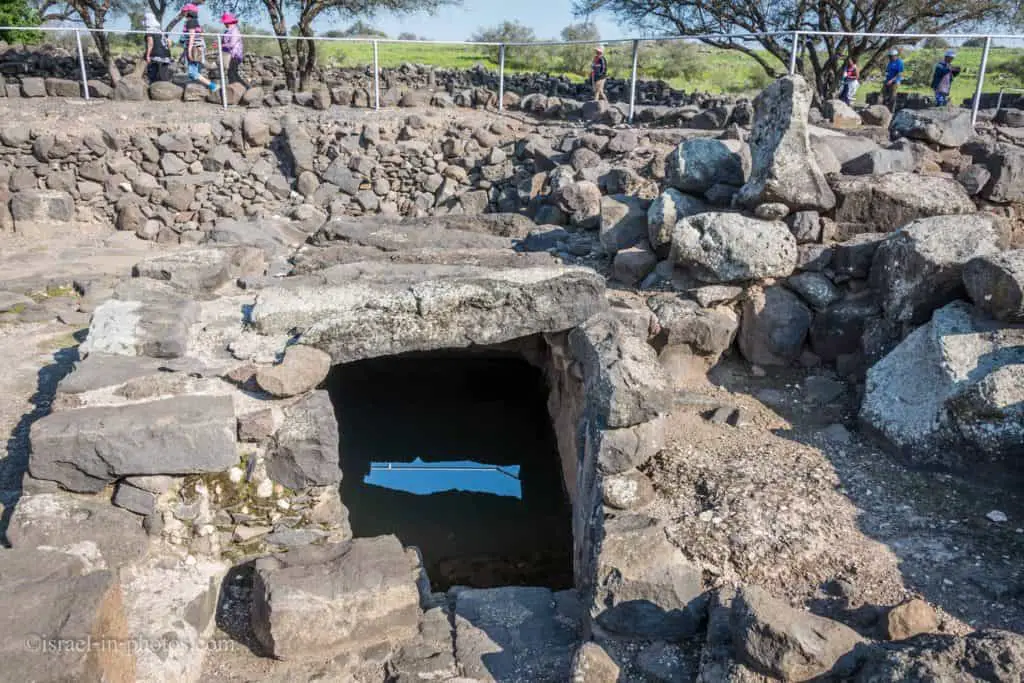
View of houses in the central quarter:

The Synagogue
The main attraction at Korazim is the Great Synagogue.

The beautiful synagogue at Korazim, built at the end of the fourth century or the beginning of the fifth century CE, is made of basalt, the region’s most common stone, carved in geometric, floral and faunal patterns. Many present-day visitors use the synagogue for Bar Mitzvah ceremonies and weddings.
Also found was a carved basalt seat, for the community’s most respected members, known in the ancient sources as the Moses Seat, bearing an Aramaic inscription. The ancient ritual bath has been reconstructed near the synagogue, along with two large dwellings and an olive press.
Note: unless stated otherwise, all quotes were taken from the official site.

The triangular structure in the previous image is a part of the decorated top of the door. Here is a closer view:

Let’s enter through the main entrance (one of three, and all facing south – toward Jerusalem).
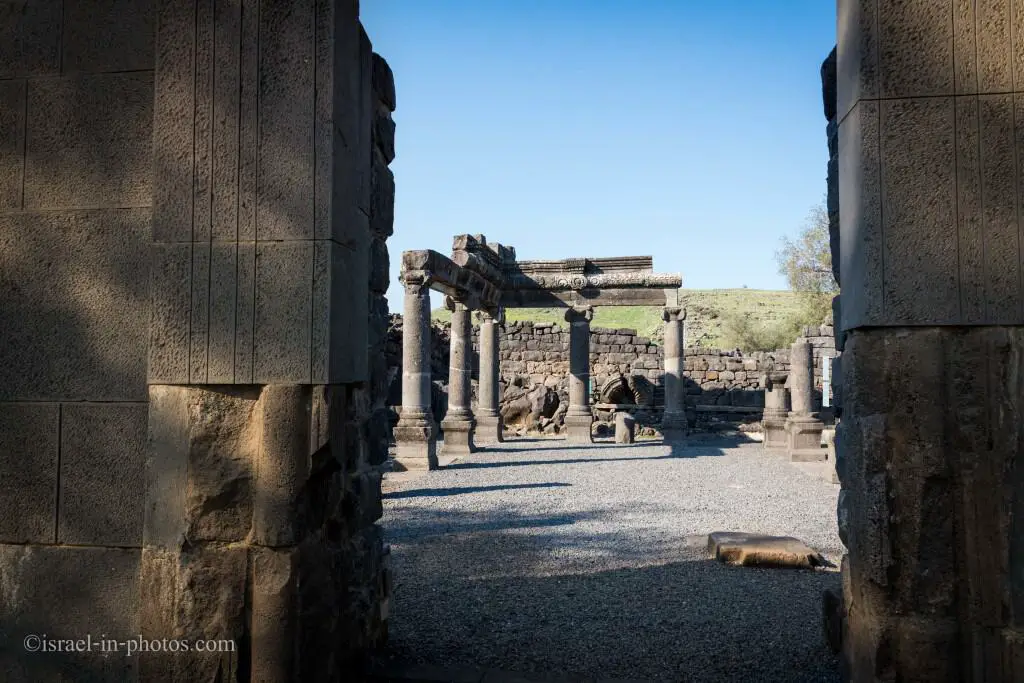
Here you can see five full-sized columns (out of the original twelve) that supported the roof:

As you can see, the stones are decoratively carved:
An unusual feature in an ancient synagogue is the presence of three-dimensional sculpture, a pair of stone lions. A similar pair of three-dimensional lions were found in the synagogue at Kfar Bar’am. Other carvings, which are thought to have originally been brightly painted, feature images of wine-making, animals, a Medusa, an armed soldier, and an eagle.
Source: Wikipedia


Many artifacts were found in the synagogue, like the head of Medusa:
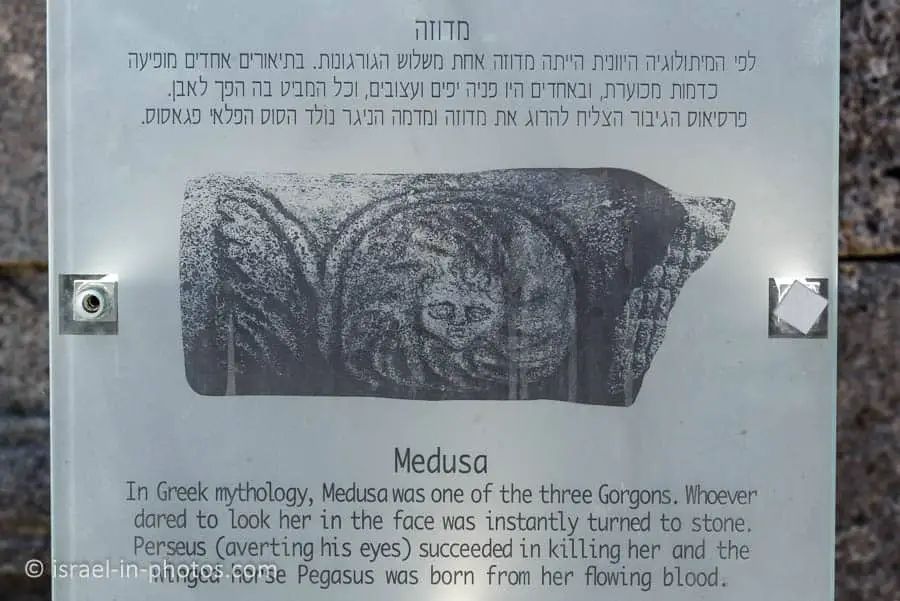

Seat of Moses
Archaeologists also found a carved basalt seat:
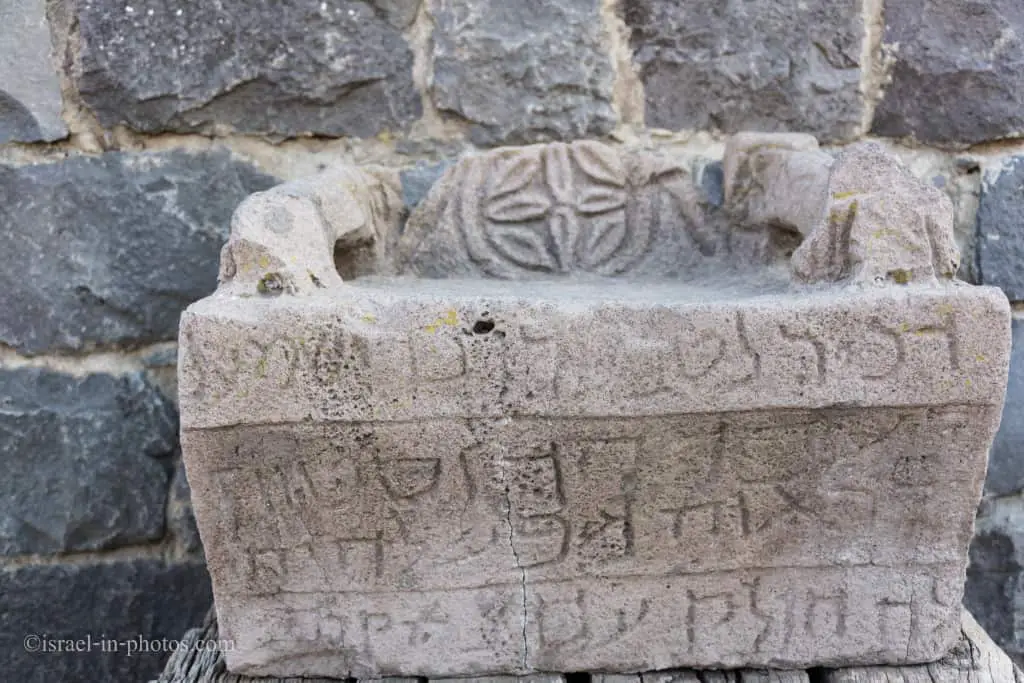
This seat is known in ancient sources as the Seat of Moses, bearing an Aramaic inscription (this is a replica, the origin is in the Jerusalem museum).
In 1926, archaeologists discovered the “Seat of Moses,” carved from a basalt block. According to the New Testament, this is where the reader of the Torah sat (Matthew 23:1-3).
Source: Wikipedia

A short break from all the stones ;)
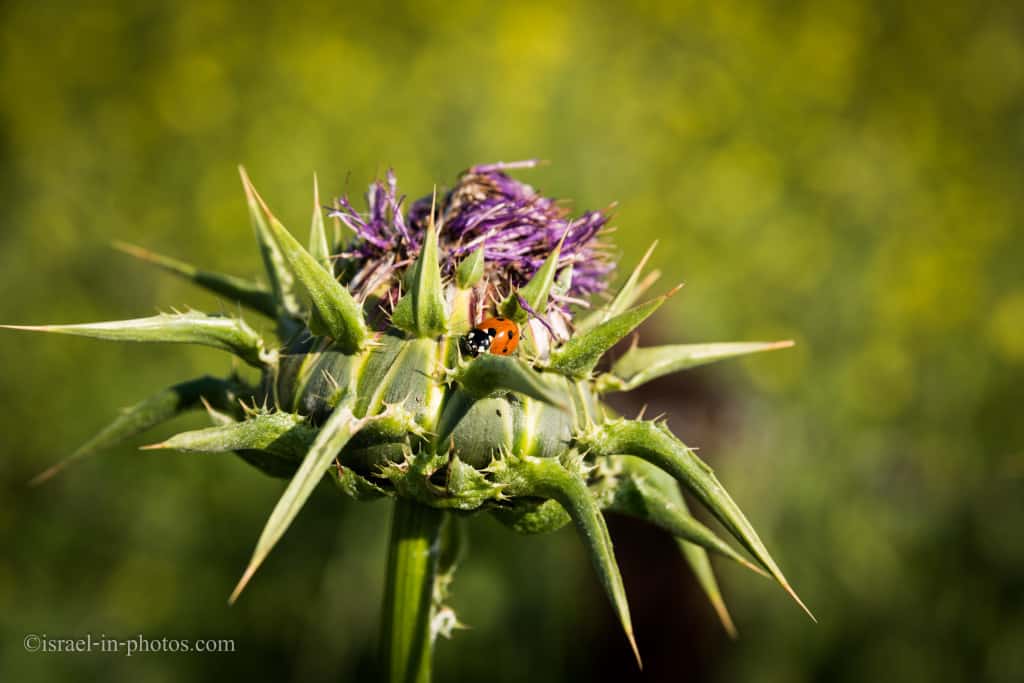
And we are back inside one of the buildings:

Reconstructed olive press:

After visiting the synagogue area, we went to the eastern complex:


Korazim is not a big park. You can cover it within 1-2 hours. But, looking around, you can see that this ancient city was much bigger. I guess they reconstructed only a small part of it due to a lack of funding.
Summary
Korazim National Park is off the beaten path, and fewer people visit it (there is even a chance you will be alone). It is a lovely small National Park, and I consider it a second priority. If you are passing in the area, and have a spare couple of hours (a typical visit takes 1-1.5 hours), then sure. And if you can join archeological excavations, I always recommend doing so.
For additional attractions in the area, check out the Sea of Galilee.
Have you ever been to Korazim National Park? Tell us about your experience in the comments below.
That’s all for today, and I’ll see you in future travels!
Stay Tuned!
Additional Resources
Here are several resources that I created to help travelers:- Trip Planner with Attractions and Itineraries is the page that will help you create your perfect travel route.
- What is the Best Time to visit Israel? To answer this question, we will consider the weather, prices, holidays, festivals, and more.
- Information and Tips for Tourists to Israel will answer the most common questions tourists have about Israel (including safety, passports, weather, currency, tipping, electricity, and much more).
- Israel National Parks and Nature Reserves include a complete list, top ten, map, tickets (Israel Pass, Matmon, combo), and campsites.
- If you are looking for things to do, here are the pages for Jerusalem, Tel Aviv, Haifa, Sea Of Galilee, Akko (Acre), Eilat, Nazareth, Safed (Tzfat), and Makhtesh Ramon.



